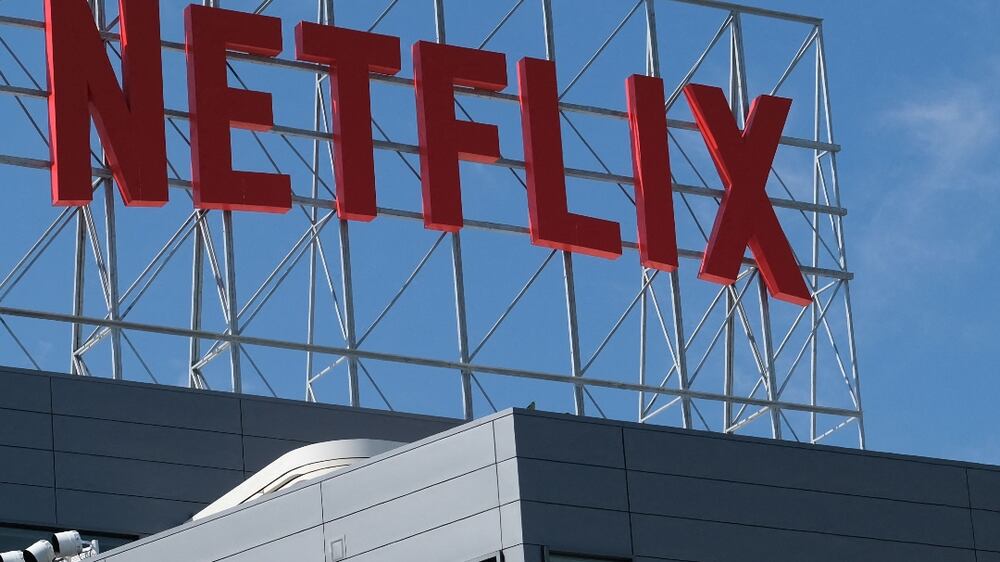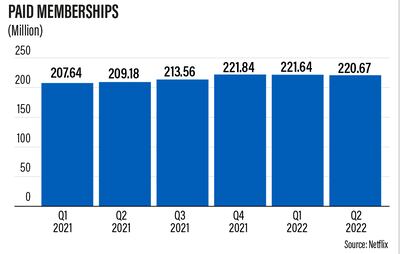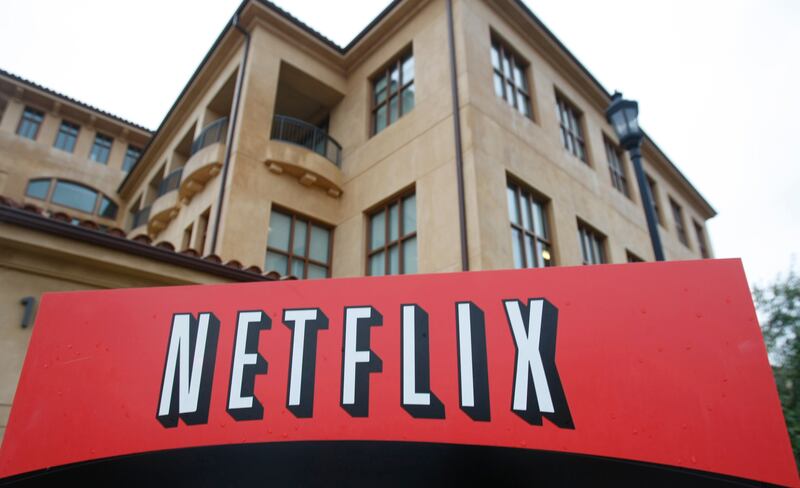Netflix is considering pricing its new advertising-supported tier at $7 to $9 a month, half as much as its current, most popular plan, which costs $15.49 monthly with no commercials.
The goal is to attract subscribers who are willing to watch some ads in exchange for a lower monthly rate.
As the streaming TV pioneer prepares to introduce advertising for the first time, it's trying to strike a careful balance between reaching a more cost-conscious consumer while still offering a pleasant experience.
Netflix plans to sell about four minutes of commercials per hour for the advertisement-supported service, far less than most of its peers, according to people familiar with the company’s plans.
The company will show advertisements before and during some programmes, but not after.
It’s also telling advertisers it wants to make smaller deals upfront so it doesn’t overpromise and overwhelm viewers with the spots, said the people.
Netflix plans to introduce its new cheaper option during the final three months of the year in at least a half dozen markets.
The company said the full roll-out may have to wait until early next year.
Details of the service have begun to trickle out as Netflix makes its plans and meets with business partners. A lot could change as the company builds out the business.
Netflix has long sold itself as a customer-friendly alternative to cable TV. People could watch TV shows and movies on-demand and without advertising. They can cancel (or sign up) at any time without much hassle and access a deep catalogue of programmes.
The 10 most viewed Netflix original films — in pictures
But subscriber losses in the first half of this year forced management to finally embrace advertising.
They believe the cheaper tier will both attract new price-conscious customers and give those ready to cancel a less-expensive alternative.
The new tier could generate $8.5 billion a year globally for Netflix by 2027, including subscription fees and advertisement sales, according to media consultancy Ampere Analytics.
Many cable networks feature between 10 and 20 minutes of advertising per hour. Most streaming services offer less than cable. Some, like Hulu, frustrate viewers by showing the same commercial over and over again.
Netflix is hoping to avoid these complaints about frequency by starting slow. It won’t be using too much targeting to tailor ads to the viewer. Most people will see the same ads.
Netflix wants to make sure the same spots don’t repeat over and over again.
Netflix stock plummets after loss of subscribers

Much of that work will be handled by Microsoft, which won the right to be Netflix’s exclusive advertising technology and sales partner. The tech company has little experience in streaming TV, but has built a $10bn advertising business in the last few years.
Netflix is handling conversations with film and TV producers, while Microsoft is talking to a lot of the advertising agencies and technology providers.
The companies have also met jointly with some advertisement agencies.
Netflix has declined to comment on any specifics about its plans, and many advertisers, partners and investors still have questions.
The streaming company hasn’t provided forecasts of how many people it thinks will sign up for the advertisement tier, nor has it said when it will start to allow third parties to measure its viewers.
Netflix has guarded its audience metrics, which it claims are proprietary and give it a competitive advantage. The company was always able to say those numbers were irrelevant, since it didn’t sell ads.
But advertisers will require that Netflix work with an outside company, like Nielsen, to measure how many people are actually watching.

Netflix is moving into advertising around the same time as Disney+, its biggest rival. While Disney is raising the price on its main plan and keeping the current price for its advertisement-supported version, Netflix is actually lowering the price of its service.
Leadership at Netflix has begun to make decisions about what programmes will and won’t have ads. The company won’t show advertising in kids’ programming, at least not at first. Nor will it include ads during its original movies.
The company would like to include advertisements in many of its own TV shows. It’s also pursuing rights to put ads into ones it licenses from partners.
Studios like Sony, Universal, Warner Bros and Paramount are happy to charge Netflix to put ads in old movies or old TV shows that were originally aired with ads. They are less eager to allow ads in newer programmes.
















